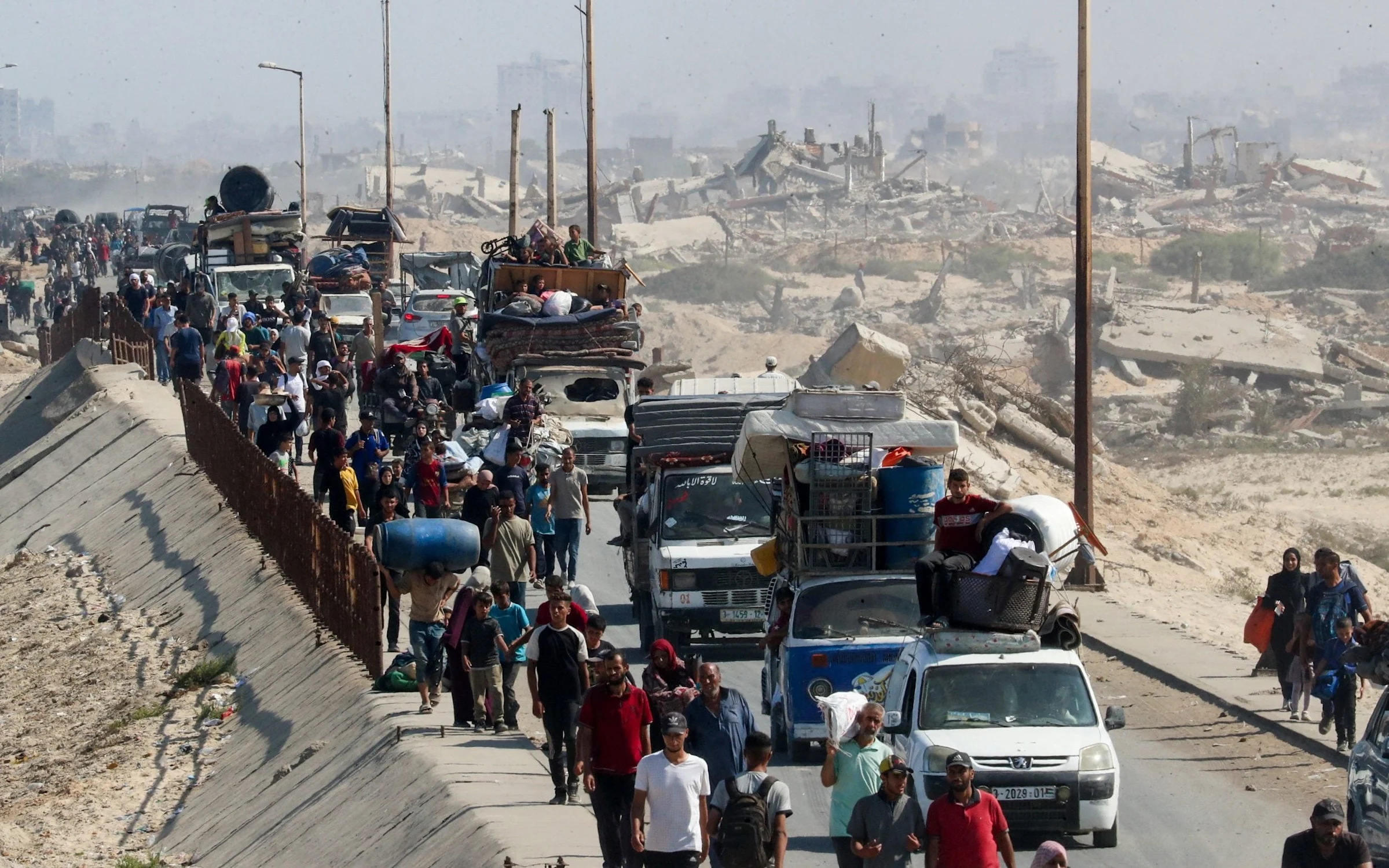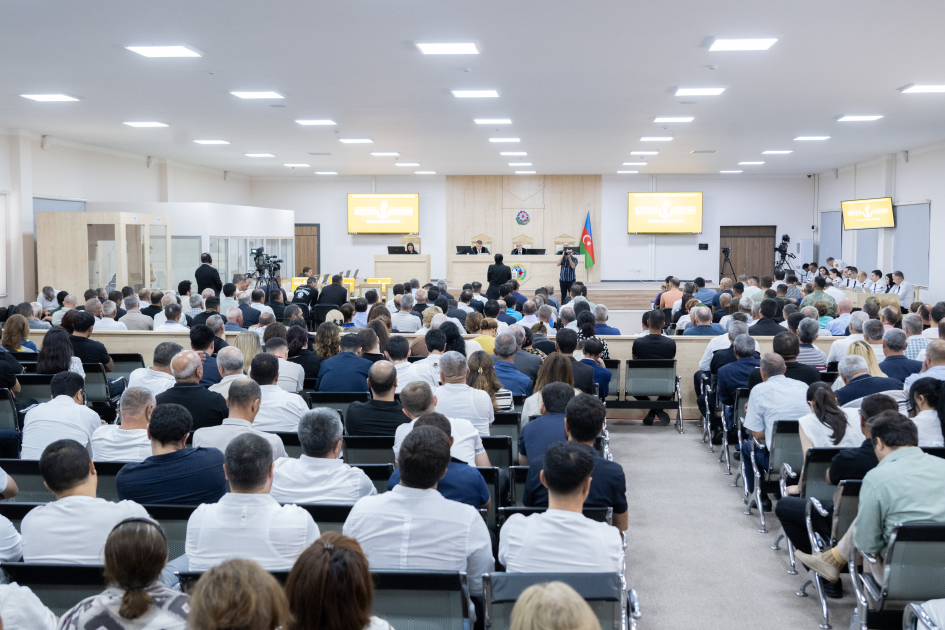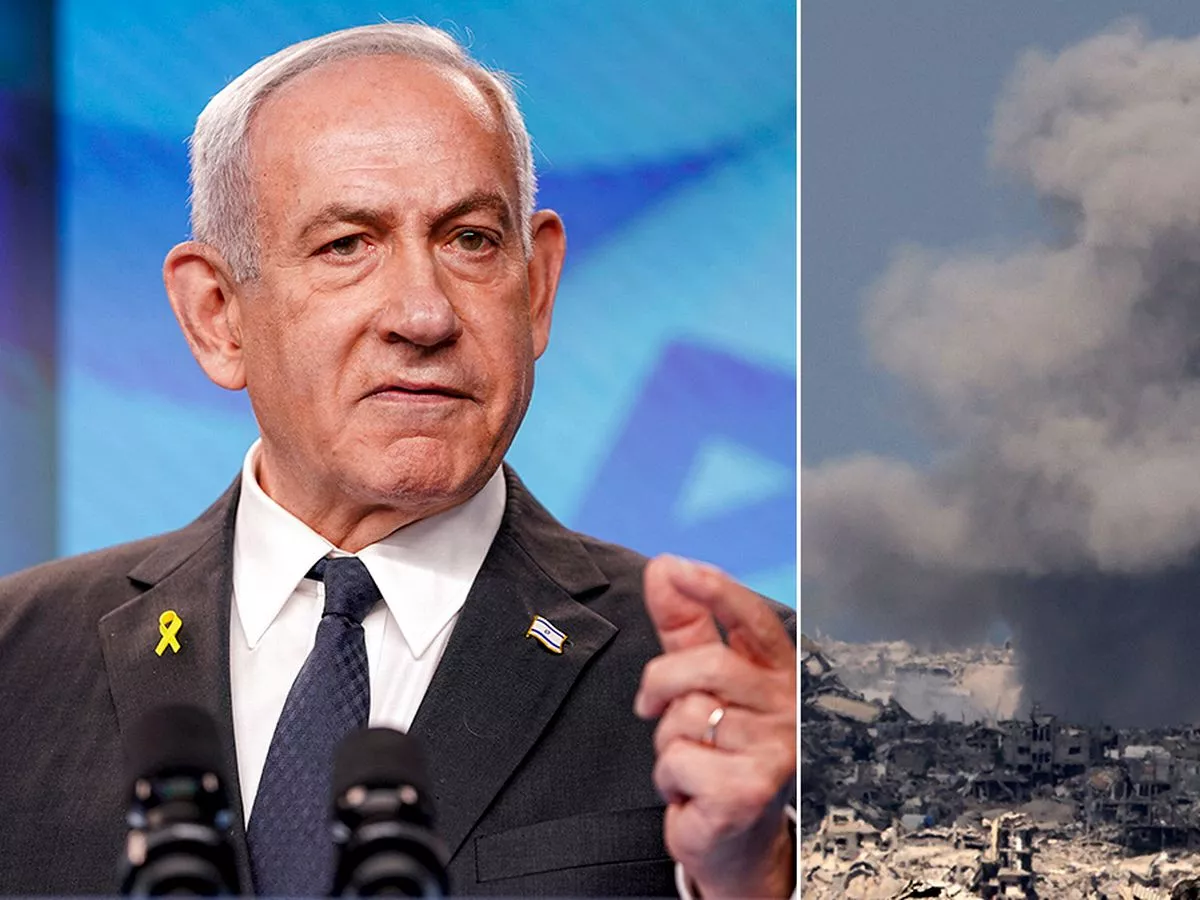By David Blair
Copyright yahoo

Even the most beleaguered prime minister can try to escape domestic troubles by making a grand and historic gesture.
Sir Keir Starmer will do exactly that on Monday when Britain is expected to formally recognise Palestine as a state during a “high level international conference” at the United Nations General Assembly.
Diplomats in the UN chamber in New York, drawn mostly from the non-Western countries of the “Global South”, are used to greeting British speeches with studied and frosty indifference.
This time the bearer of the UK’s announcement will bask in rare acclaim. More than a century after Britain issued the Balfour Declaration in 1917, promising a “national home for the Jewish people” and paving the way for the birth of Israel, the UN audience will rejoice in the symbolism of a British emissary coming before them like a penitent sinner to close the ring of history and recognise Palestine.
The delegates will be particularly delighted when Britain officially re-emphasises its devotion to the “two-state solution”, which holds that creating a sovereign Palestinian state in the West Bank and the Gaza Strip is the only way of resolving the Arab-Israeli conflict.
And the denizens of the UN will be relieved to see clear water between the British and American positions on the Middle East, a sentiment that many UK diplomats will discreetly share.
Then the acclaim will die away and no one will want to talk about cold reality. So here is the hard fact that you will never hear from our Prime Minister: a Palestinian state will not and probably cannot exist.
Clinging to fiction
Put bluntly, the two-state solution that Britain and most other countries officially support – and virtually everyone at the UN likes to applaud – has almost certainly slipped beyond the realms of the possible.
Many outside experts on the conflict privately say as much. Over the years I have heard the two-state solution (or “2SS” in diplo-speak) being written off behind closed doors by UN officials, aid workers and diplomats, starting as long ago as the early 2000s when I was living in Jerusalem as this newspaper’s Middle East correspondent. “The door has closed on that,” said one UN official of long experience – and that was back in 2009.
British ministers have occasionally voiced their fears in public. In 2012 William Hague, then foreign secretary, said: “If progress on negotiations is not made next year, the two-state solution could become impossible to achieve.”
No progress was made in 2013 – or in any subsequent year – so it follows that the outcome forecast by Hague must have come about.
But no one wants to pronounce the corpse to be dead because, in one respect, the conventional wisdom is right. The two-state solution really is the only way of ending the Arab-Israeli conflict since there can be no other answer to some stubborn facts.
Today, more than seven million Jews and about the same number of Palestinians live between the River Jordan and the Mediterranean. Neither of the two peoples is going to disappear and neither will ever consent to being governed by the other.
Any talk of forcibly transferring millions of Palestinians out of the Holy Land is fantasy, even if Donald Trump’s supposed plan to turn Gaza into the Riviera of the Middle East seems to indulge this notion. Where would they go? Which country would take them in? How would they get there? What about those who refused?
It follows that about 15 million Israelis and Palestinians are going to carry on living in the Holy Land. Unless one side is going to occupy the other forever, the logic goes, peaceful co-existence will only be possible if each has their own state. Given that Israel has existed since Britain left the Mandate of Palestine in 1948, that has to mean the birth of a Palestinian state.
The argument has not really changed since Lord Peel, a Tory cabinet minister under Stanley Baldwin, led a Royal Commission to Palestine in 1936 during the Arab revolt against British rule.
The starting point of his perceptive and loftily fair-minded report was that the struggle in the Holy Land was not between right and wrong, but rather a “conflict of right with right”.
Peel concluded that the answer was “partition” – later to be called the two-state solution. “Partition seems to offer at least a chance of ultimate peace,” reads the Commission’s report. “We can see none in any other plan.”
And it’s because Peel was right and nothing else offers any prospect of peace that diplomats and governments cling tenaciously to the manifest fiction of the two-state solution.
Standing beside Donald Trump on Thursday, Sir Keir duly promised to “bring Israel and the region back towards a comprehensive plan which can deliver peace and security”. The Prime Minister elaborated on the need for an “overall package that hopefully takes us from the appalling situation we’re in now to the outcome of a safe and secure Israel and a viable Palestinian state”.
Trump, with a stronger grip on reality, simply declared: “This has been going on for a long time… for decades and decades.”
In the past I had a small hand in keeping the illusion alive. While writing speeches for three foreign secretaries and one prime minister, I occasionally composed stirring words of support for the two-state solution and how we must all strive to bring it about.
At the time, I was duty-bound to express official British policy, which was genuinely intended to be helpful and constructive. But now I’m a journalist and I’m under no obligation to be helpful; my only job is to report unvarnished reality, no matter how tragic it might be.
And the first reality is that one Israeli government after another has done its utmost to make creating a Palestinian state as hard as possible.
Israel and the ‘two-state delusion’
The core of any such state would be the West Bank, the territory captured by Israel during the Six-Day War of 1967 and spanning barely 2,200 square miles – smaller than Devon, bigger than Northumberland.
Israel has sliced and diced this land into a jumble of zones and enclaves and today the West Bank is split into three areas, the largest of which, Area C, covers about 60 per cent of the total and is under full Israeli control. The Palestinian Authority under Mahmoud Abbas exerts nothing but limited control over the scattered blobs and tentacles of Areas A and B.
Meanwhile, Israel has laced the West Bank with over 140 Jewish settlements and scores of illegal outposts, dotted across the landscape, generally on the high ground, carefully surrounding the main Palestinian population centres.
Today at least 500,000 Israelis live in the West Bank – and no viable Palestinian state could emerge in the cracks and gaps between these settlements and their web of access roads.
Benjamin Netanyahu, the Israeli prime minister, has accelerated the speed of construction, but every Israeli government of whatever political colour has pressed on with expanding settlements; only the pace has varied.
It follows that creating a Palestinian state would require Israel to give up territory, tear down settlements and evict many tens of thousands of its own citizens from their homes.
Yes, you could draw a border that would leave the biggest settlements – like Maale Adumim with 38,000 people – inside Israel. Some settlers might also be willing to leave voluntarily in return for compensation.
But that would still leave tens of thousands of religious and ideological settlers who would not go quietly. It is inconceivable that any Israeli government under any prime minister would launch an operation forcibly to remove so many of its citizens. You might as well expect a British government to shut down the NHS.
Instead, Israeli ministers openly proclaim that the reason for expanding settlements is to make Palestinian statehood impossible. Last month, the government approved 3,400 new housing units in an area known as E1, the last link in a chain of building projects that will slice the West Bank in half and sever it from Jerusalem, the eastern half of which Palestinians hope one day will be the capital of their independent state.
Bezalel Smotrich, the finance minister, hailed a “significant step” that “practically erases the two-state delusion and consolidates the Jewish people’s hold on the heart of the land of Israel”.
He added: “The Palestinian state is being erased from the table, not by slogans but by deeds. Every settlement, every neighbourhood, every housing unit is another nail in the coffin of this dangerous idea.”
The plan to build inside E1 began in the 1990s yet previous Israeli governments always held back, not least because Britain privately threatened to recognise Palestine if the project went ahead.
Now that Sir Keir will recognise Palestine anyway, there is no reason for Israel not to proceed.
In fact, the Israeli government may respond to Britain’s decision by going still further and formally annexing areas of the West Bank.
Just as Israel has redesigned the West Bank, so it has done the same in Jerusalem in order to make it impossible for any area of the holy city to become the capital of a Palestinian state.
About 200,000 Israeli settlers now live in Palestinian East Jerusalem, which Israel captured in 1967 and has formally annexed.
No Israeli government, of any political persuasion, is going to agree to divide Jerusalem.
Meanwhile, the terrorism of Hamas has destroyed any possible constituency in Israel that might once have supported Palestinian statehood in the cause of peace.
Palestinian terror
Straight after the signing of the Oslo accords in 1993 – the only formal peace agreement between Israel and the Palestinians – Hamas launched a campaign of suicide bombings in Israeli cities, targeting buses, markets and public places.
By 1995, Hamas had executed 14 attacks and killed 86 people, causing many Israelis to conclude that agreements with the Palestinians produced bloodshed rather than peace.
Then, in November 1995, an Israeli extremist assassinated Yitzhak Rabin, Israel’s prime minister, removing perhaps the only leader who might have persuaded Israelis that it was still possible to secure their country’s future through negotiation and compromise.
Events since then have followed what Israelis view as a tragic pattern. Whenever they sacrifice land, they get more terrorism. When Israel withdrew from almost all of southern Lebanon in 2000, Hezbollah instantly advanced to the border and began a steady drumbeat of attacks, triggering wars in 2006 and 2024.
Most fatefully of all, when Ariel Sharon’s government left Gaza in 2005, evacuating 8,000 Israeli settlers and bulldozing their homes behind them, Hamas seized control of the territory and began bombarding Israeli cities with rockets.
So began a long and bloodsoaked campaign that culminated in the atrocities of October 7 2023 and the current war, which has become the longest and bloodiest in the history of the Arab-Israeli conflict.
The outcome is that Israelis react with incredulity to any suggestion that they should withdraw from the West Bank to make way for a Palestinian state.
Look eastwards from any high-rise in Tel Aviv and a range of green hills seems close enough to touch. That scenic view is of the West Bank: those hills would be inside a Palestinian state. Land at Ben Gurion airport and your plane circles above the same landscape.
After the searing experience of recent decades – and particularly October 7 – Israelis are not going to allow the high ground overlooking their biggest city and their only international airport to become the sovereign territory of what they see as an implacable enemy.
Meanwhile, Gaza was supposed to be not only the seaport but the airport of a future Palestinian state. It seems incredible now but in the 1990s, the runway and control tower of Yasser Arafat International Airport were built outside Rafah in southern Gaza.
Israel’s near total destruction and depopulation of large areas of Gaza today is, among countless tragedies, another blow against a viable Palestinian state.
The diplomatic charade
One diplomat who devoted much of his career to resolving this conflict is Aaron David Miller, formerly of the US State Department, who advised six American secretaries of state. Asked whether he believes the two-state solution is still practically and politically achievable, he replies candidly: “I have a conflicting view about this.”
Miller was at the Camp David peace summit in 2000 which brought together Yasser Arafat, the late Palestinian leader, and Ehud Barak, then Israel’s prime minister.
Miller describes these negotiations as the “last serious attempt to resolve the Arab-Israeli conflict”. But he adds: “At the end of that summit, the gap between the two sides was galactic. It was as wide as the Grand Canyon.”
He says: “Nothing that has happened in the last 25 years has made closing the gaps any more realistic.”
Miller believes that four conditions would have to be satisfied before there could be any chance of progress: Israel and the Palestinians would need to have leaders with the will and the stature to make an agreement. The two sides would need to agree on at least the broad principle of an “end goal” – like two states for two peoples. There would have to be a powerful mediator, which can only be America, prepared to tempt and threaten both parties with what Miller calls “honey” and “vinegar”. And you would need Arab states to back the drive for peace and influence Palestinian politics accordingly.
Miller says that none of these requirements exist today – and none is likely to exist. “For the foreseeable future, if you ask me, do I see the sun, the moon and the stars coming into alignment, my answer would be absolutely not,” he says.
And yet Miller cannot bid farewell to the two-state solution. “It’s bad analysis and it’s morally unconscionable to say ‘never’,” he says.
“Today, as I speak to you in September 2025, it’s not bad analysis to say that it’s impossible. But to say that it will be impossible throughout the annals of time is bad analysis.”
Miller adds: “The only useful deployment of the term ‘from the river to the sea’ is to describe what you would do with 15 million human beings who live between the Jordan and the Mediterranean. If you look at the other options [apart from two states], they simply don’t provide a pathway forward.”
Living with conflict
But why must the parties choose the pathway that goes forward? No rule says that every human conflict must be resolvable, or that every problem has to be capable of settlement. The Romans fought the Parthians for 700 years. The inhabitants of the Iberian peninsula struggled against their Muslim invaders for nearly 800 years.
People of goodwill shrink from the possibility that the Arab-Israeli conflict really might be intractable. Almost nine decades ago, Lord Peel’s report expressed that sentiment by saying: “Numberless men and women all over the world would feel a sense of deep relief if somehow an end could be put to strife and bloodshed in a thrice hallowed land.”
Yet if the land is hallowed, does that not make bloodshed more likely? We should steel ourselves for the tragic possibility that the two-state solution is dead, regardless of the applause of the UN, and the platitudes of Keir Starmer’s recognition of Palestine. Both are meaningless.
The reality is that the Holy Land’s future is not two states, peace or even a peace process, but indefinite conflict.



